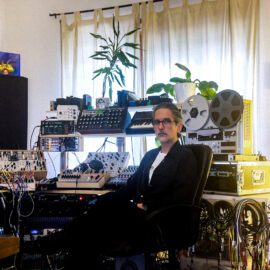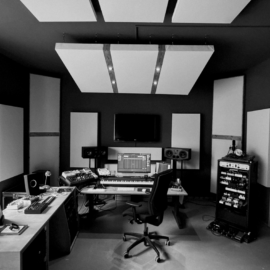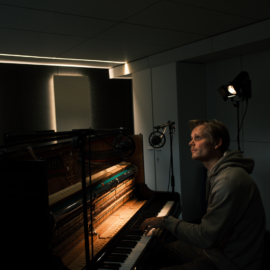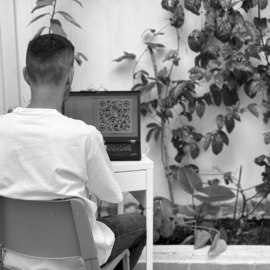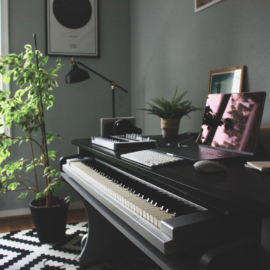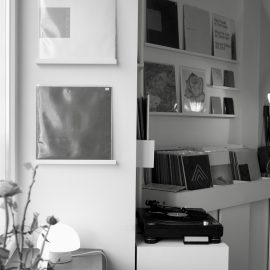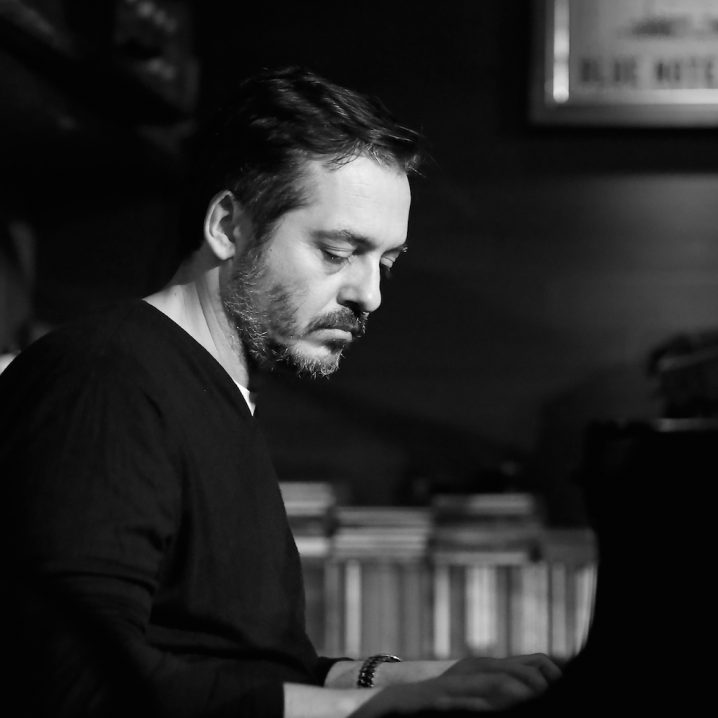
Let’s start at the very beginning. Can you tell us how you got involved in composing, and what was your very first piece of gear?
Back to the very beginning, I’d say I was hooked on music after the very second I started listening to J.S.Bach’s ‘Toccata and Fugue in D minor’. I was about 10 and I still keep that tape from my father’s collection. After that, I started taking organ lessons, as I was totally fascinated by the character and peculiarity of this instrument. I’d say my first pieces of gear were two. The first one was the electronic organ in the hall of my parents’ house. Then in 1983, I received as a gift my first MSX home computer and I started programming sequences and rhythms in MSX Basic. It was fun, with that language you could program up to three simultaneous parts, for each of them you could even choose the type of wave (saw, square, sine) and other interesting parameters as well. So I started to play the organ along with some programmed stuff on my MSX and by doing that I was, unconsciously, producing my first compositions. Then, after about four years, I got an MSX2 computer with a keyboard and a sound module that even featured a little sampler. By then I was already lost in ambient music, thanks to the second part of David Sylvian’s ‘Gone to Earth’ album. I still have those demos I did back then. They are not the most interesting stuff around, but there was a lot of passion for sure.
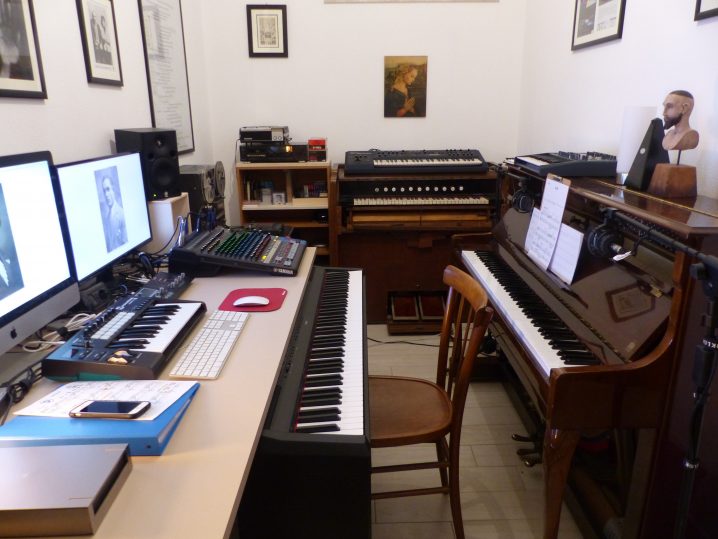
How many different studio iterations have you gone through, and what does your final setup look like right now?
During my life, I’ve been into electronic music at different levels of involvement. I remember, during the ’90s, having my Korg 01W/FD hooked to some modules and a sampler. I had this little project of mine, strictly electronic stuff, called Kre:8 (I know, this is a cheesy moniker, back then I thought it was cool). I even got in touch with Andy Barlow of Lamb, who really liked my first demo and invited me to reach his band in a Rome date in 1999, during their ‘Fear of fours’ promotional tour. So, basically, it was all hardware stuff that converged into the main mixer (a 16 channels Behringer model, when this brand was still manufactured in Europe). This kind of set up kept existing until my Waves on Canvas period (my last project heavily oriented in electronic music and songs), when I still had a lot of modules (a Waldorf Microwave XT, a Roland JP8080, a Vermona DRM MkIII, an Akai S5000 and an AKAI S3200XL among others) and all of them were hooked to Logic. Then one day I decided that I had to go exclusively acoustical. I had something to still deal with, I felt incomplete because something was really missing inside of me, as I just wanted to do what I’d always thought was impossible: to write my music for piano and strings, real ones, not libraries. It happened that I found the right people to play with (what basically still nowadays is my Ensemble), so I told myself it was the right time to sell everything and just keep my piano and my computer, nothing else, because I had to completely focus on something else for a while. That was my studio set up until a few years ago, when I then decided that I could embrace again electronic music, but with a different consciousness and approach. Nowadays I’ve got reel-to-reel tapes, a Waldorf Blofeld, an Arturia MiniBrute, a Roland JP8000, a hundred years old Dutch harmonium, a Korg KP-3, and a lot of acoustic instruments. Anyway, I tend to produce my sounds from acoustic sources, before processing and tweaking them in different ways.
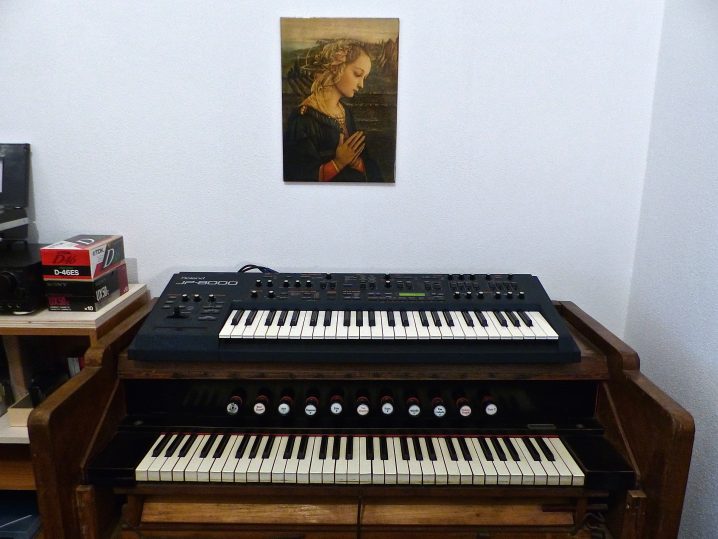
Tell us about your favorite piece of hardware.
This is a tricky question. Anyway, I must say, if this has to be the instrument I had to bring with me in a faraway and distant island (given that there would be some electricity), I’d say my Roland JP8000. Its warmth is something I love finding peace and shelter. That instrument is capable of very lovely and imperfect pads. I usually hook it into my mixing board (a Yamaha MG20XU) and also add some ‘dust’ to it with my Korg KP-3. But, anyway, if for ‘piece of hardware’ you mean whatever instrument, then I’d say my beloved piano.
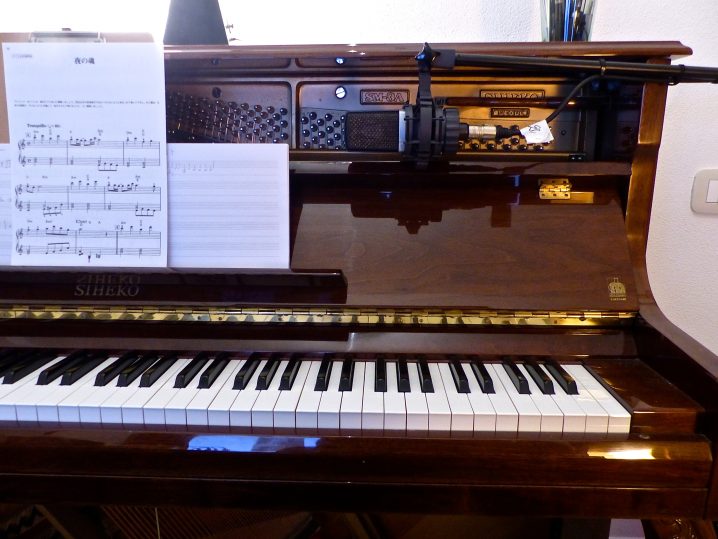
And what about the software that you use for production?
After using Cubase in the ’90 for a lot of years, I switched to Pro Tools LE in 2005 back when I purchased my first Mac Book Pro (I remember selling my entire video games collection in order to afford it, something I will forever regret, but I had to do it, I had no choice). It was bundled with the firewire version of the Digidesign M-Box Pro 2 I had. But I remember having a lot of problems with my DAW, the most notable ones being sudden and random crashes. Not what you were willing to happen after hours of work. So I switched to Logic 7 and I remember how happy I was receiving that big box full of manuals and guides, it was heaven. From then onwards, I never switched to any other DAW. I still work with Logic 9 and haven’t changed for the latest version because I simply don’t have the need. The ninth version of Logic is, anyway, very stable. I know Logic a lot, but there are still a lot of things and procedures to be learned. Also, I don’t like the choice of Avid, to make people pay an amount of money per month in order to work with Pro Tools, I mean, it’s a sort of rent. I am more in the old school way where, if I buy something, it is definitely mine.
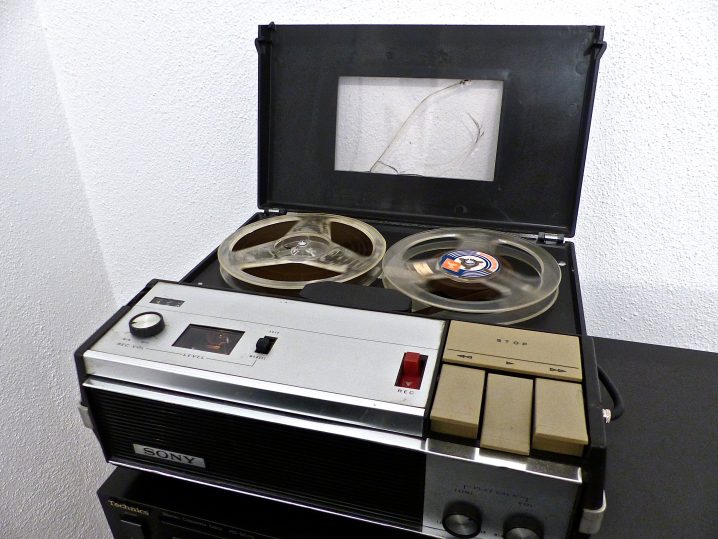
Is there a particular piece of gear that you’re just dying to get your hands on and do you think one day you’ll have it?
Well, I’d say there are two instruments I would really love to put my hands on and make mine. The first one is an acoustical one, and it is a celesta. I love that sound, it’s organic and shiny and deep at the same time. I have a lovely collection of glockenspiels and metallophones, but even if you change the kind of sticks and hammers while playing them, the sound won’t be like the one of a celesta, which is not cheap and sounds very wonderful. I’ve seen celestas are not so rare in Germany, so one day I will do my best to buy one and ship it safely to Sardinia, considering the long road it has to do. The second one is a dream, and I would really love to have enough space where I could keep and play a liturgical organ. There are also small models, the aunt of my viola player owns one at her house because she is an organ player. You don’t have to own a space like a Church to host an instrument like that. Who knows, maybe one day it will happen.
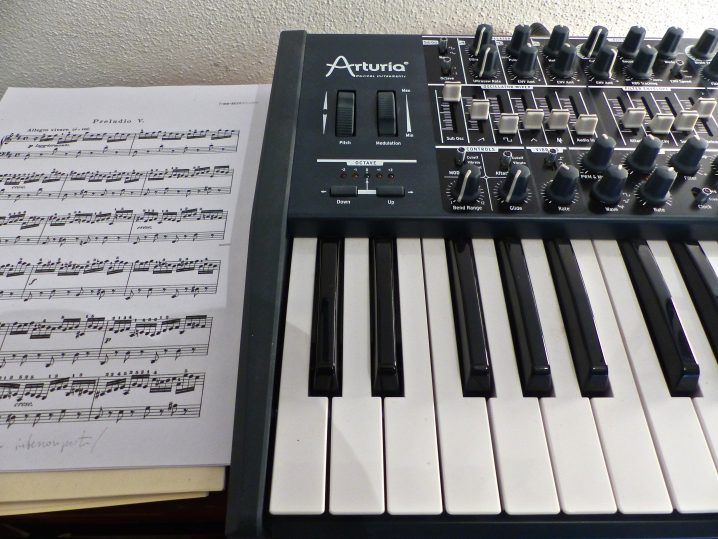
Can you please share some aspects of sound design in your work?
What I usually like to do is what they taught me at the Conservatory where I graduated in Electronic Music, and it’s related to the fact that every sound in nature has a tonal center, mainly due to a redundant or most present frequency range. So, when I can, and when it’s aesthetically pertinent, I love transforming sound objects to proper sounds or notes, in order to characterize or sustain a certain part of a composition. This could be taken as a given and very common thing, but every time I apply this approach, it brings interesting results and unexpected surprises. Of course, I am not (and will never be) a preset guy, even if in the past I was obsessed with a few ones (the Korg MS2000 ‘Pan Tran’ being on top of the list), so every time I start a new work I usually take my time to make some new sounds that I like, when of course I am not going to use the ones I’ve already done. Most of them are on my JP8000 anyway.
Any particular new techniques that you tried out for your new album?
Lately, I am having this habit of basically mixing and already mastering while I am writing a new track. I set up the compressor (I usually use the PSP Vintage Warmer II) on the master channel, and I start from there. When I’ve finished the track I keep mixing the last bits and then I start the mastering process, but most of the work is already done, also because I know very well my studio monitors (a pair of Yamaha MSP5 I purchased a lot of time ago).
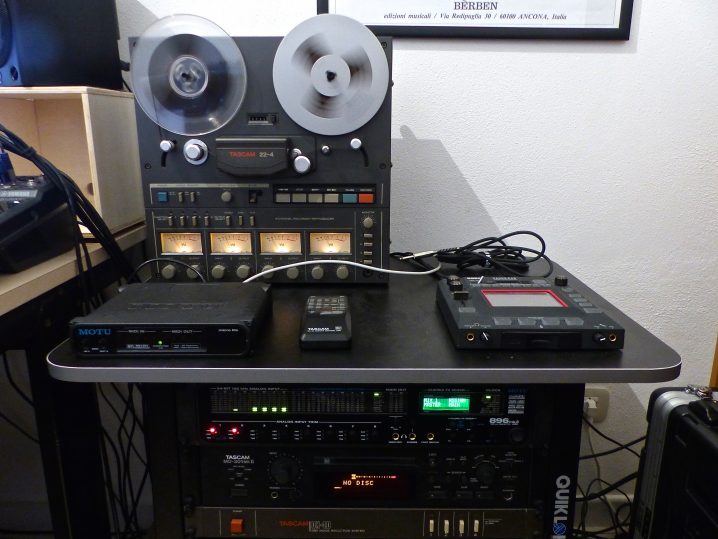
What does your live setup look like, and what do you bring with you when you travel for an extensive tour?
It depends, I tend to do mostly acoustic sets. But when I play concerts that feature parts of electronic sounds, I just bring with me my Mac Book Pro running Ableton, my Edirol FA101 sound card (with 8 separate outputs, so I can send all the metronomic clicks to each player) and that’s it. At times I also bring with me my Line 6 FBV Express MkII, which I use as an expression pedal hooked to an FX send on the piano channel in Ableton.
What is the most important environmental aspect of your current workspace and what would be a particular element that you would improve on?
I love my studio because it’s a small and warm place, stuffed with everything I really need. In the past, I thought I vitally needed the day’s light and a big window to work properly, which is not. I prefer an intimate environment with soft and warm lights. Maybe I’d need more space, maybe in the next house if we’ll ever move elsewhere. But honestly, I have nothing to complain, I truly love where I work. I have everything I need.
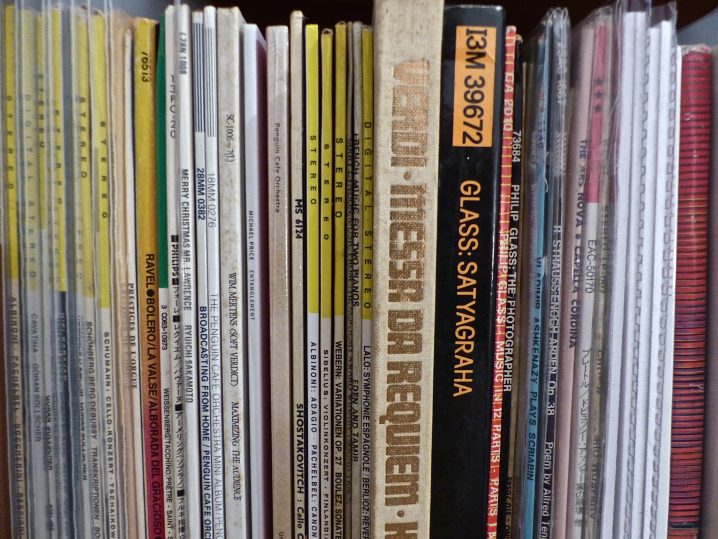
What can you tell us about your overall process of composition? How are the ideas born, where do they mature, and when do they finally see the light?
I usually sit at the piano and start playing until something that I feel is valuable and worth my attention starts to appear. So when it happens, and I have enough time, I start working on it and develop a more structured idea. If I am in a rush, I just record the musical embryo on my iPhone or iPad, or I write down some notes about it. This can even happen at 3:00 am and that’s the bonus of having your studio in your house. Anyway, the most interesting cases are when I dream about music. I tend to dream about themes, at times even completely arranged pieces, so when I wake up I work immediately on what’s left in my memory. There are some of my compositions which are based on things I’ve dreamed. I think there is a true connection between our creative output and our inner feelings and thoughts, which in the end are just concepts that transcend the spoken and written language, like music indeed. That connection is for me a sort of straight line from my unconscious to my consciousness. I hope it gives the idea.
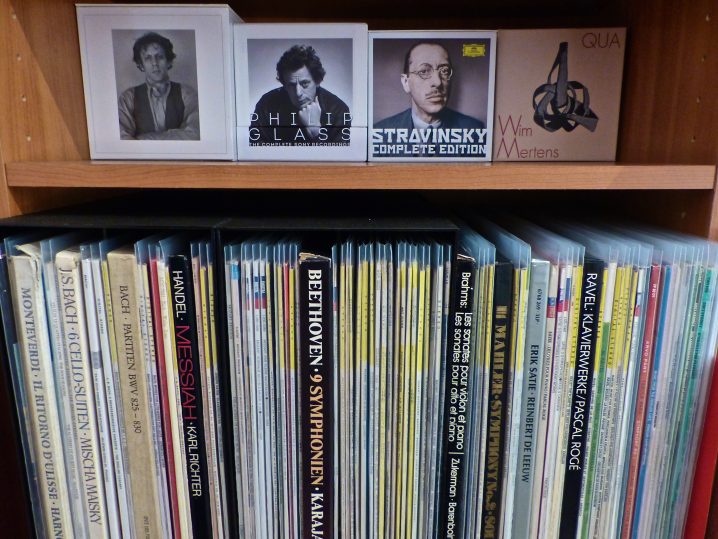
After the piece is complete, how do you audition the results? What are your reactions to hearing your music in a different context, setting, or a sound system?
That’s a very important aspect of the creative process, and I think we never have to underestimate what comes after we say to ourselves: ‘Ok, I’ve finished this track’. Then comes the moment where we can clearly see if the track works also on its own and not just in the studio or in the environment where we were totally focused on it. For instance, I record it on a MiniDisc, and from time to time I listen to it in my living room, where I’ve got another MiniDisc deck. Other times the help of my wife is totally needed and, indeed, essential. When I think I’ve completed something, I ask her to give a listen, because she’s the first listener who I totally trust. I could even change a composition in its entirety if she suggests me to do it because she knows me very well, she knows my limits, and she perfectly knows the traps I tend to fall in.
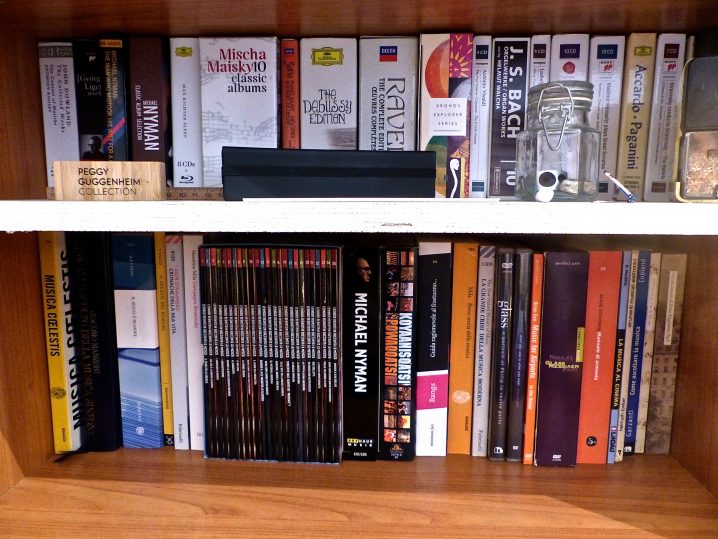
Do you ever procrastinate? If so, what do you usually find yourself doing during those times?
It can happen, and when it does it’s just because my mind is asking me for a break. Usually, I am a very prolific writer, needless to say, my hero is Wim Mertens who released tons of albums, so I write a lot, also because in my head I have a lot of ideas about projects and concepts for releases. In the end, writing music has become for me my main way of truly expressing myself. But at times I have to stop and do other things or just relax. I usually read a book or watch some YouTube’s videos about recording studios or recording techniques. Other times the nerd inside of me knocks wildly because he needs to come out and express himself, so I tend to play a video game, usually a JRPG, watch and read some nerdy reviews about retro games and consoles (only Nintendo stuff, please). I am also a follower of some YouTube channels like The Eight Bit Guy, Christian Henson Music, and Techmoan.
What gets you inspired?
Life. What happens in my life, spiritually and on a more concrete level, is my main inspiration. For instance, these past years have been heavily inspired by the illness and the subsequent death of my father, who passed away this past March. Also, I live in Sardinia, an island in the center of the Mediterranean sea, so I am surrounded by waves. This has an important impact as well on my creative output. The same goes for nature which, here in this land, is quite generous.
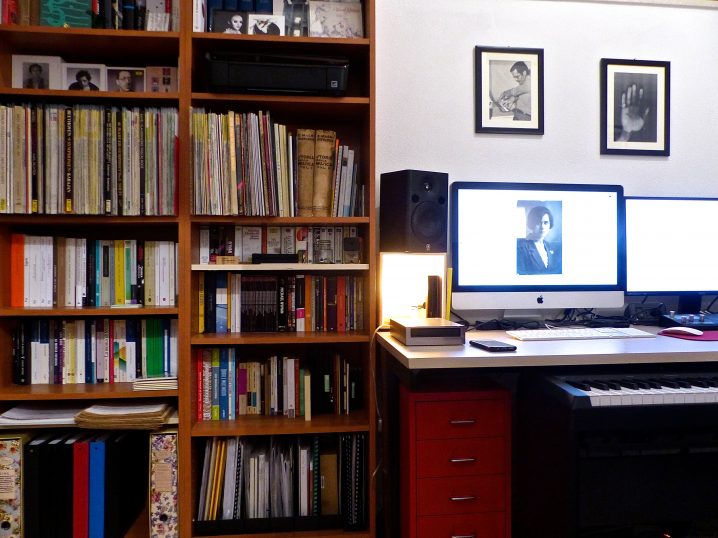
And finally, what are your thoughts on the state of “electronic music” today?
I am not a huge listener of electronic music. Surely I was a lot into it in the past, but with the years passing by I unconsciously lived a subtractive process that led me, in the end, to listen mostly to classical music or silence. Also because, being this my main job, working with music all the time, at the end of the day I don’t tend to listen to some other people’s music. Anyway, replying to your question, I’ve seen things have changed a lot. There is more knowledge around, a lot of tutorials on the web, so if someone decides to write and produce electronic music, he has got all the tools at hand for free. Styles are constantly mixing each other and some aesthetic styles return cyclically, so things are naturally following their historical loop. The thing that has changed is that nowadays in order to start working with a sampler you don’t have to spend a fortune like you had to do in the nineties, you just need a cheap PC and start do your own stuff with some freeware as well. Not bad I’d say. So, yes, in the end, I think the state of ‘electronic music’ is quite glowing and prolific. I just hope this won’t bring electronic artists to a state where all things sound the same. But we’ll have time to witness all this.
